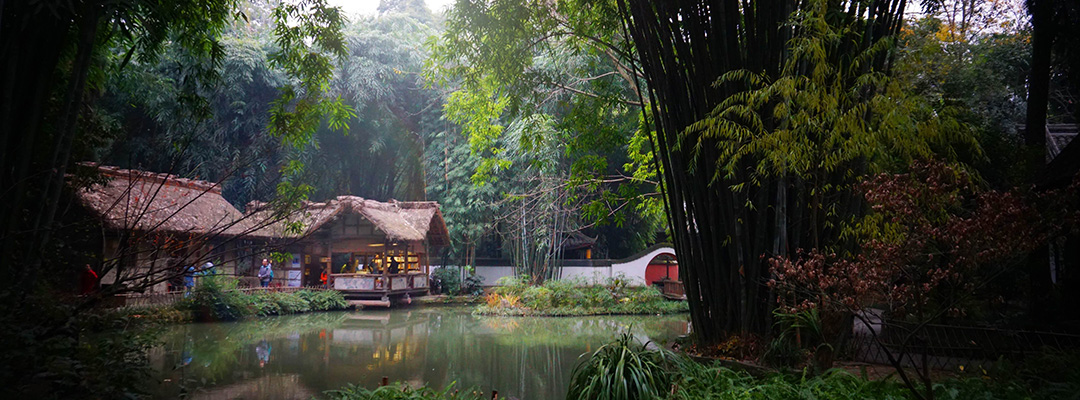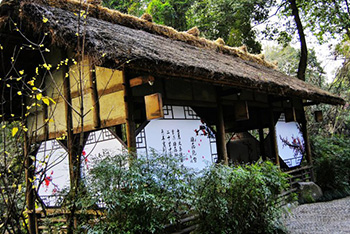Du Fu Thatched Cottage Museum

Located on the picturesque bank of Silk-washing Stream outside the Western Chengdu City, and built by Du Fu with the support of his friends, Du Fu Thatched Cottage Museum was the place where Du Fu and his family lived for nearly four years to avoid the chaos caused by war. Du Fu wrote over 240 poems here. The Cottage today is elegant and serene and of a grand scale, though simple. Within the residence, there are cloisters. In front of the Cottage are paths decorated with flowers in the east and railings along the stream in the west. Behind the Cottage are pavilions and ponds. Inside the cottage park are tall and luxuriant Machilus zuihoensis Hayata, Wintersweet, fragrant orchids, and thick bamboos and pines. The poetic cottage is a harmonious combination of man-made and natural landscapes.
- Chinese name: 杜甫草堂 Dù Fǔ Cǎo Táng
- Built in 759 AD
- Duration: 1.5 hours
- Entrance fee: RMB 60 per person
- Opening hours: 08:00~18:30 in summer; 08:00~18:00 in winter
- Address: 37 Qinghua Road, Qingyang District, Chengdu City, Sichuan Province
- Best time to visit: all year around
- How to get there: Take Bus 19, 35, 58, 59, 82, 165, 170, 208, 309, or 319 and get off at Du Fu Cottage Stop
Highlights of Du Fu Thatched Cottage Museum
- Beauty of architecture: The simple design of the main entrance reflects the overall style of the cottage. Simple structures inside make it more like a folk house than a palace or temple. Wooden structure and grey bricks add a natural flavor to the cottage.
- Beauty of water: Just like Chinese classic gardens which originate from nature but are better than nature, the cottage conveys the natural style of pastoralism in Sichuan. Canals and ditches run through the site and divide the central axis and converge at ponds in the west, middle and east parts of the cottage. The natural water-design of classical gardens is adopted in the cottage. Both balanced design and irregular design of the water can be found here, which complement each other.
- Beauty of flowers and trees: Machilus zuihoensis Hayata, bamboos, Wintersweet, and lotus that have been written about in the poems by Du Fu, make the cottage a site with more touches of memorial significance and humanity. Camphor trees, ginkgoes, peaches, pines, Chinese wisteria, Chinese flowering crabapple, Camellia, and Magnolia denudate (lily tree) all add natural flavor to the cottage. A far-reaching and profound garden environment is thus created.

Exhibitions and events:
Exhibitions, cottage celebrations and lectures are held here every year. As a mecca of Chinese poetry culture, Du Fu Cottage plays a critical role in promoting poetry culture and national traditions, conveying its historic and cultural meanings as well as unique charm as a poetry holy land among more visitors and local residents
Drop us a line and we'll connect you with the top China expert in no time!